Last updated:
Refereed articles
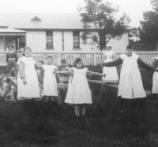
Researching the History of Institutional Abuse in the Archives
Expand SummaryRecent public inquiries into the policies and practices of indigenous child removal and the institutionalisation of children more generally have revealed, through the often-harrowing accounts of those who experienced it, that abuse was a significant, if hidden, dimension of institutional life. These revelations demonstrate that a full understanding of the history and legacy of past institutions requires researchers to acknowledge and investigate institutional abuse.
The purpose of this article is to show the kinds of archival records and methods researchers might use to investigate institutional abuse, in the absence of testimony from survivors or other witnesses, taking as a case study the first twenty-five years in the history of the Kew Idiot Asylum (better known in Melbourne by its later name, Kew Cottages). The article shows that, while there are limitations to what we can now know, it is possible to see behind contemporary public assurances that all was well and discover the existence of institutional abuse, the forms it took, the circumstances in which it occurred and understandings of it within a particular institutional world.
Readers should be aware that the language used in the late nineteenth and early twentieth centuries to describe people with intellectual disability is now highly offensive. While acknowledging that this is so, this article retains the use of contemporary terms because they are revealing of past attitudes to, and understandings of, intellectual disability. Use of such terms has, however, been minimised where possible. The author would also like to stress that she does not share the assumptions the contemporary language expresses. The names of all patients and their families in this article are pseudonyms.

Rethinking the Chinese gold seekers in central Victoria
Expand SummaryThis article examines the Chinese goldseekers and the historical mining landscape of central Victoria in the context of the locality of Vaughan Springs, situated along the Loddon River in the central Victorian goldfields. The article uses a close reading of legal records and contemporary newspaper and mining wardens’ reports to explore the experiences of the region’s Chinese community. This approach aims to uncover both the nature of Chinese experiences on the diggings and the complexities of an emergent goldfields culture during the gold rush era. By synthesising primary source archival documents with the relic mining landscape of the Mount Alexander diggings, this article seeks out new understandings of Chinese cultural life and practice in the region.
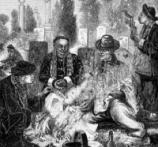
Inquests into Chinese Deaths on the Bendigo Goldfields 1854-65
Expand SummaryChinese migration to Victoria in the 1850s, which equalled the first entry into California and far exceeded later migrations to other Australian colonies, New Zealand and British Columbia, makes Victoria a particularly important area of study for overseas Chinese. Most historians who have tackled it make victims of the Chinese in their eurocentric stories of prejudice and violence. Without denying that European miners often demonstrated their prejudice or that Chinese miners were treated unfairly in many ways, dwelling on conflict and violence has limited consideration of the personal lives of the Chinese. One difficulty faced by historians who wish to recover details of the lives of Chinese migrants is the dearth of personal Chinese sources. The many accounts from ordinary Europeans about conditions on the goldfields, in letters, diaries or narratives that illuminate their lives has not been matched by equivalent Chinese sources. However, inquest records can give some insight into the living and working conditions of Chinese miners, as they provide an opportunity for Chinese witnesses to present their versions of the circumstances surrounding the death of a mate or a relative. This paper uses inquest records, reports from the goldfields and local records to explore the lives of Chinese miners on the Bendigo goldfield from 1854-1865, arguing that Chinese miners led full lives on the goldfields, supported in sickness and in health by strong networks of relatives and countrymen with whom they enjoyed their leisure time. They also communicated across boundaries, working alongside European miners, establishing personal relationships and experiencing similar frustrations in dealing with goldfields’ administrators.
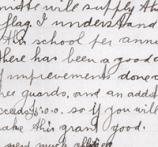
School and Scandal in Mallacoota
Expand SummaryFree, compulsory secular education was introduced into Victoria under the Education Act 1872 (Vic). In newly established remote rural communities parents would come together, provide lists of potential students and lobby the Education Department for the establishment of their own State School. This article examines the early history of one of Victoria’s most remote schools in far East Gippsland — Mallacoota School, No. 3515, and considers how a school could be an arena where both community unity and divisions could be played out. Poet and journalist EJ Brady made his home at Mallacoota in 1914. An inveterate critic of government bureaucracy and an advocate for the development of East Gippsland, his correspondence with the Education Department provides an insight into political and social dimensions of life in a small community at the beginning of the century.
Forum articles
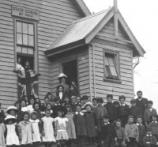
The growth of the town of Loch and its school
Expand SummaryThe township of Loch in South Gippsland was established with the coming of the railway in the 1880s. Early in Loch’s development, the townspeople recognised the need for a local and accessible school to provide the fluctuating numbers of children with an elementary and socialising education. Petitions were sent to the Victorian Department of Education for this purpose and by 1889 the school had been constructed and a Head Teacher, Francis William Clarke, appointed. He remained at Loch for the next 28 years and his time there provides the focus for a broad exploration into the establishment and growth of a small Victorian town. The school’s fluctuating numbers reflect the transient nature of Loch’s early population, while Clarke’s experiences with the Victorian Department of Education demonstrate the difficulties of dealing with a remote and officious bureaucracy. In many ways the history of this school and its teacher provide valuable information about living in what was then an isolated town, and the efforts of its residents to establish a sense of place and community. Through school history, we gain insight into the values, aspirations and achievements of the town’s people.
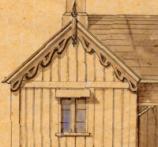
The use of public records at the Sovereign Hill Museums Association, Ballarat
Expand SummaryThis article discusses the value and importance of public records for historians working in an outdoor museum such as Sovereign Hill. It points out that Sovereign Hill’s mission to depict the ‘mining, social, cultural and environmental heritage of Ballarat’ demands, in the first instance (and wherever possible) accuracy of re-creation. In projects such as the 1850s Government Camp (on which was based the accommodation complex at Sovereign Hill), and the Red Hill National School (a two-day, costumed school experience), the richness and detail of Victoria’s public records have enabled historians to describe the exact nature of the buildings as they existed in the nineteenth century. This, in turn, informed the architects and builders of Sovereign Hill’s own re-created buildings. The value of public records in developing the story of the Eureka Stockade has likewise been invaluable. The detail, the chronology, the players and participants — indeed, the basic integrity of our sound and light presentation is fundamentally reliant on the availability and accuracy of public records.
The detail which is such an intrinsic part of public records has always been of immense importance to historians attempting to understand, for example, the difficulties of establishing an education system on the goldfields, the nature of school curricula, the style and content of the textbooks, and the trials and tribulations of the teachers of the goldfields schools. Similarly, the accuracy with which public servants in nineteenth-century Victoria recorded the changing fortunes of police and government buildings on the goldfields provides not only wonderful detail of layout and elevation, but also gives us a window through which we may understand something of the nature of law and order on the goldfields of central Victoria.
Finally, the article identifies the value of public records in supplying some insights into the ‘essence’ of the Victorian age. The formality of the written word, and the richness of the language used, enabled Sovereign Hill’s historians to gain a deeper understanding of the ways in which public records might be said to have actually helped to shape the whole Victorian age.
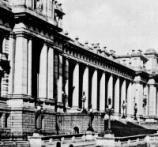
The past importance of land ownership as an electoral qualification in Victoria
Expand SummaryWhen Victoria celebrated 150 years of responsible government in 2006, Public Record Office Victoria marked the event with an exhibition. Jill Barnard and Sonia Jennings were commissioned to research and write a catalogue to complement the exhibition and this article draws on research conducted for that purpose. Our short history used the Land Acts to illustrate the role of government and legislation in the lives of ordinary Victorians. Land ownership and electoral rights were inextricably related and it is interesting to trace the steps taken by successive governments to extend and refine the electoral franchise.
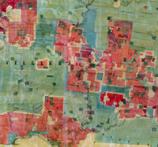
The 1862 Land Act and its ‘big map’
Expand SummaryThe University of Melbourne’s Cultural Heritage Unit has recently completed a project in partnership with Public Record Office Victoria to digitise a unique record from PROV’s collection — a 4.5 by 6 metre map of Victoria, created by the Parliament of Victoria in 1862.
Digitisation of this map (serialised in VPRS 7664/P3 Unregistered maps and plans, Unit 1) opens up the possibility of making this resource readily accessible to the public for the first time. The next phase of this project will involve exploring the different ways in which this digital resource can be made accessible to researchers on the internet. Technology is available to use the ‘big map’ as the basis for an innovative interactive map which could provide new representations and understandings of land settlement in Victoria.
In this article, map-making, surveying and naming are discussed as crucial activities in the process of the colonisation of Victoria — activities that provide us with insights into the cultural and political perspectives of early European occupiers of the land. The big map from 1862 and its representation of ‘Victoria’ is but one representation of the land, created by the colonial government.
New technology (such as the TimeMap software developed by the University of Sydney’s Archaeological Computing Laboratory) has the potential to create representations of maps and landscapes that can demonstrate that a map is not a natural reflection of a self-evident reality, but a human construction, and one that is open to contestation from those who might see the landscape in different ways.

A Snapshot of Gold Rush Victoria
Expand SummaryThe word ‘stockade’ has been associated, particularly in recent years, with the Eureka Stockade conflict at Ballarat, which has overshadowed the word’s other use in gold rush era Victoria, as the term for a low security prison. Several of these stockades were opened in metropolitan Melbourne at the height of the gold rush including Pentridge (1850), Richmond (1852), Collingwood (1853) and the ‘Marine Stockade’ at Williamstown (1853). They supplemented other stockades constructed closer to the goldfields, and the prison hulks moored off Williamstown. The stockades contained prisoners with shorter sentences, or those having served part of their sentences on the hulks.
With few residents during the gold rush, North Carlton was colloquially referred to as Collingwood, in reference to the small settlement to its east, and its relative isolation from Melbourne made it an ideal location for one of the city’s earliest penal institutions — the Collingwood Stockade. Today, North Carlton’s rows of elegant Victorian terrace housing and wide streets now cover the district’s early history as the site of one of the Colony’s largest prisons.
The stockade’s register of ‘Personal Description of Prisoners Received Collingwood Stockade 1856’, held at Public Record Office Victoria, provides a fascinating documentary account of its prisoners, which totalled more than 300 at one stage. But also of interest in the register is a description of each prisoner’s origin, with many having only recently arrived in the Colony, from all corners of the globe. The Collingwood Stockade’s inmates reflect the cultural diversity of gold rush era Victoria. Most were single young men, some as young as fifteen. With no family in Victoria, and probably a limited social network, it is of little surprise that many soon found themselves in trouble with the law.
After the Collingwood Stockade closed in 1866, its buildings, many built by its inmates, were converted into an asylum for the reception of ‘lunatics’ transferred from Melbourne gaols. This institution, the Collingwood Stockade Asylum, existed until 1873, when the site was converted to its current use as Lee Street Primary School. Stockade prisoners quarried bluestone on land that now forms Curtain Square in North Carlton, and some of this was used on the stockade’s buildings. After these were demolished, the bluestone was salvaged and used for the footings and flaggings of the 1878 primary school building. This bluestone, and a stone tablet from the former Governor’s House fixed to the wall of the school, are today the only visible physical reminders of the former Collingwood Stockade.
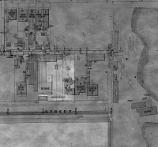
Evoking a landscape through archival research
Expand SummaryArchives held at Public Record Office Victoria, complemented by photography and digital recordings, can provide a rich source of material for evoking a cultural landscape. Similarly, considering records in the geographical context of the landscape they are created in or refer to can enable a greater understanding of the overall context of their creation. A case study of a portion of the Merri Creek in Northcote and Brunswick explores these relationships and some of the stories that can be told about the Merri.
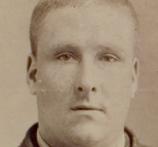
The Case of Hassett and De Le Veilless
Expand SummaryThe brutal 1889 assault on a Victorian Police Constable, Albert Ernest Vizard, put into motion a sequence of events revealing underlying social tensions in colonial Victoria. Convicted of Vizard’s assault, John Hassett and Francis De Le Veilless would receive the harshest sentence the Crown could apply. Though the guilt of De Le Veilless seemed clear cut, serious doubts about the case against Hassett presented from the outset.
This article tells the story of Hassett’s struggle to clear his name. Making the case for his innocence, Hassett succeeded in rallying the support of his acquaintances in Gippsland, revealing tensions between the rural Victorian community and the authority of the Crown. For a decade from the date of the asssault on Vizard, Hassett would maintain his innocence, backed by his Gippsland supporters and the capable attorney William Forlonge. Despite the determination of Hassett and his supporters to clear his name, and the emergence of new evidence backing their claims, his fate would be resolved in a final desperate act.
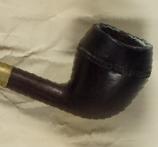
The fated affair of Frederick Jordan and Minnie Hicks
Expand SummaryThe 1890s hit Melbourne with a thud. Gone was the promise and vibrancy of the gold years. Depression loomed. Those who had witnessed Melbourne’s glory in the heady days were now shocked at the despair and stagnation to which the city had so quickly succumbed. Port Melbourne was not immune to these troubles. However, because of the docks’ daily influx of people and goods, employment was still available for some lucky souls. The frequent comings and goings of the port also lent a bustling cosmopolitan air to the surroundings. Like most ports, the area was awash with hotels, dotting the landscape seemingly every few metres, coveting every prime corner position. Many still operate. Of those long closed, the skeletons are still readily discernible in the landscape. The hotels amplified the spirited nature of the burgeoning suburb and were popular not only with locals but sailors too long at sea. Despite the gaiety that these establishments provided, they undoubtedly contributed to the seedier side of life in Port Melbourne. Port itself was a maze of narrow streets, ramshackle buildings and highly questionable street hygiene. Ignoring the lessons learned from Ancient Rome, in an astonishing and dangerous lack of planning Melbourne was without sewerage until 1897. Before then, the infamous nightsoil men lurched through the darkened streets collecting the daily offerings in creaky, leaky carts, dribbling the cargo in their wake. Such fragrant practices led the city to be christened ‘Smellbourne’. In many ways, it was not fit for human habitation. Typhoid, diphtheria, consumption and dysentery flourished in the filth. Despite these mortal dangers, Port in the 1890s would have been a very colourful place to live. Although predominantly working class, all manner of people resided in Port Melbourne — the well to do, down at heel and everyone in between. It was also a popular residence for people straight off the boat. By the 1890s, it appears a small black community had formed in Port Melbourne. Seemingly entirely male, the majority worked at the docks or in other menial labouring jobs. They found themselves popular among the local women, particularly those ‘of a certain class’. In the minutiae of Port life, a loose social group of black men and their white (common law) ‘wives’ evolved. Through the voices found in the archives, their preoccupation appears to have been drinking and swapping partners between one another. It proved to be a volatile mix.
Material in the Public Record Office Victoria archival collection contains words and descriptions that reflect attitudes and government policies at different times which may be insensitive and upsetting
Aboriginal and Torres Strait Islander Peoples should be aware the collection and website may contain images, voices and names of deceased persons.
PROV provides advice to researchers wishing to access, publish or re-use records about Aboriginal Peoples
